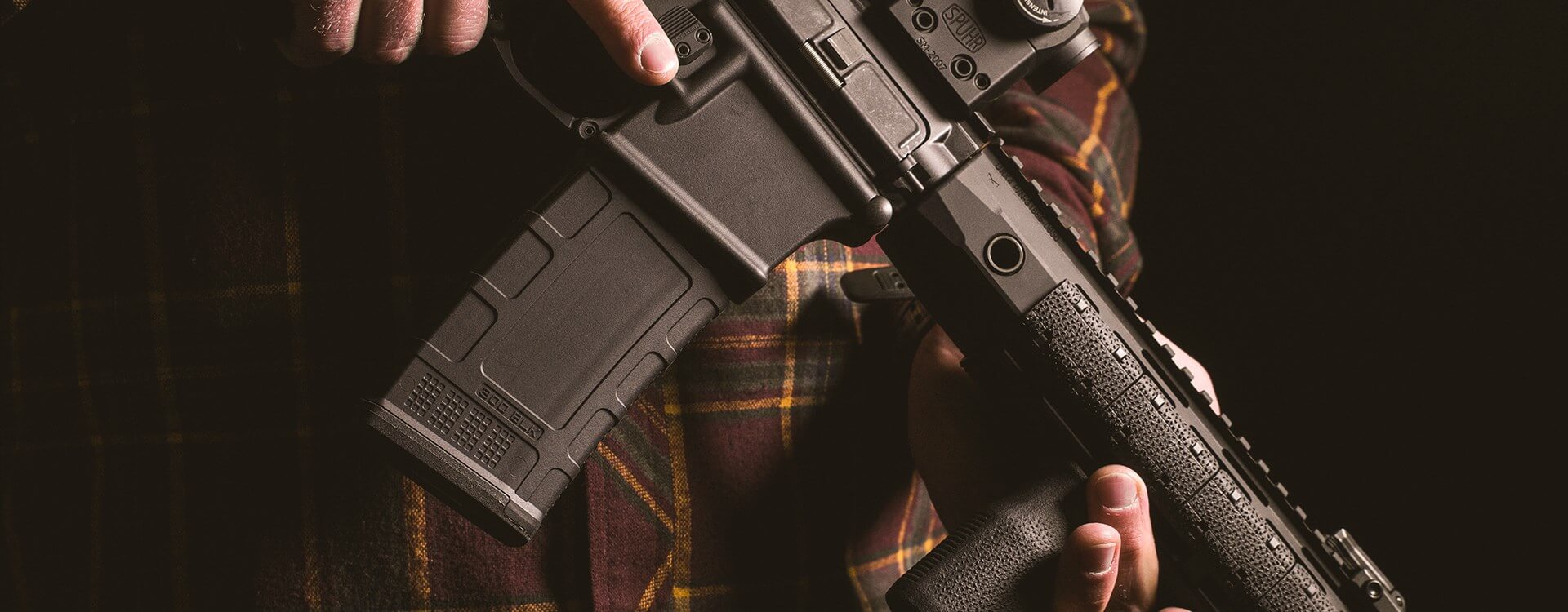Already quite the beast of a cartridge, the 5.56mm NATO was a suitable round of ammunition for the standard AR-15, but it came with its setbacks. AAC wanted to develop a round that exceeded the power of the 5.56mm without sacrificing sound levels and firearm capability. What they produced was the .300 Blackout (BLK), a slightly thicker carbine cartridge that was still compatible with the AR-15 models and delivered on everything AAC wanted to touch on. Somehow without amplifying sound and actually increasing usability, AAC’s .300 BLK delivers on power in a way that enhances America’s most popular sporting rifle.
Exactly how did the armament developer create a round that surpassed the already impressive5.56mm NATO? It was a matter of looking at the cartridge’s shortcomings and developing a plan to improve upon them.
Making the .300 Blackout
A 12” barrel was what was required for the 5.56mm. Anything shorter, and the shooter would be met with an impressive fireball that, while not entirely dangerous, wasn’t practical. The cartridge required all 12” to ensure the powder was burned off before exiting the barrel. If not, it would ignite. A barrel longer than 12”, however, resulted in a decreased range, making it an unreliable round with a suppressor.
To rectify this, AAC look to the .300 Whisper for inspiration, a cartridge designed specifically for suppressed firing. Rather than start off from scratch, the .300 BLK was designed from a 5.56mm NATO round that was stretched out and trimmed down. Side-by-side, the BLK looks like a thicker and stubbier version of the 5.56.
Within the casing of the .300 is fast burning powders and bullets weighing anywhere from 110 to 220 grain. The fast burn allows the .300 to be compatible with shorter barreled rifles without risking the fireball after effect. The round’s composition also makes it an effective cartridge to be used with longer barrels, with an effective range of 500 yds achieved with a 16” barrel.
As an added bonus, use of the .300 BLK in an AR-15 doesn’t require a full swap of the magazine, lower receiver, and upper receiver. Users are able to swap out just the upper receiver without diminishing the quality of the round’s power and distance. The AR-15’s ease of customization makes switching to the .300 a breeze and may cause users to think there’s no contest between the 5.56 and .300 rounds.
On the contrary, while the .300 BLK is a more powerful and more compatible cartridge, it’s not without its faults. If you’re looking to make an educated decision on which round better suits your needs, you’re going to need to compare every aspect of both cartridges.
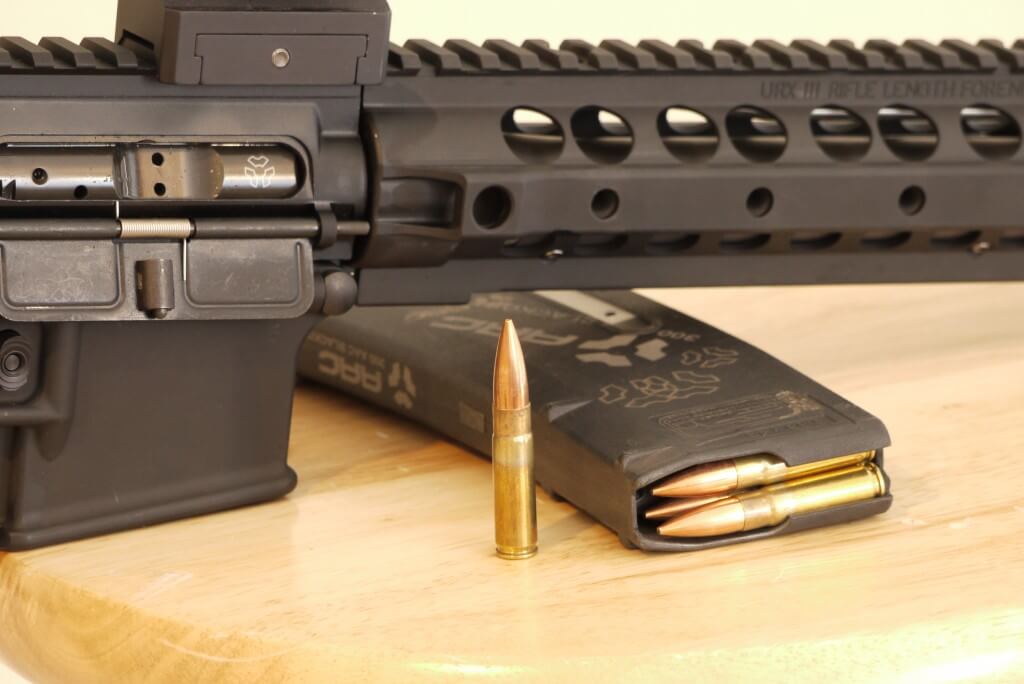
.300 BLK vs 5.56mm NATO
Cost
When you break down the cartridges by cost, you’ll find that the 5.56 is considerably cheaper than the .300. At $.50 to $3.00 per round, the BLK is double the cost. Being able to use a shorter barrel without the potential for a blowback, however, may be worth the extra money per round.
Recoil
At a 9lb recoil, the .300blk has a kickback three times greater than the 5.56mm.
Effective Range
Though the 5.56 has a greater range (500 yards compared to 300 yards), the .300 blk is more effective when it comes to hunting.
Weight
The .300 BLK is filled with 110 to 220 grain bullets while the 5.56 sports 40 to 77 grain. This makes the 5.56 approximately 40% lighter than the .300.
Availability
You’re going to have a considerably easier time finding the 5.56mm round. Availability of the .300 blk cartridge is fairly low, which sometimes pushes buyers to go for a different caliber altogether.
Common Uses
The 5.56 has a greater range of common uses, including home-defense. Since the round breaks apart on impact, it’s safer to use within a home. The .300 has more force behind it and is recommended for hunting and when the need to pierce a barrier arises.
Comparing the Ballistics
With the more basic information out of the way, you can focus on what really matters: the ballistics of the .300. Without knowing how a bullet will fair in an open environment, it’s impossible to walk away making an educated decision.
Since there is a sizable difference in the weight of the 5.56mm NATO and the .300 BLK, you can probably already guess how it’s going to play out.
Exterior
Tested with barrels that would be most commonly used with each cartridge, it was determined that the 5.56mm NATO fired much flatter than the .300. Due to its lower weight, the 5.56 can achieve a much higher velocity, measured at approximately 3,100fps when fired from a 20” barrel and 2,800fps from a 16” barrel.
The lowest velocity for the .300 BLK was a 220gr weight fired from a 9” barrel. It reached a maximum of 1,000fps. At 125gr through a 16” barrel, the .300 can achieve a velocity of 2,240fps and 2,100fps from a 9” barrel.
When compared to each other, the 5.56 was affected less by the window and had a longer bullet drop distance.
Terminal
Getting a bit more technical with the cartridge, the terminal ballistics refers to how the round reacts on impact with its target. This factors in density, penetration over fragmentation, the wound channel, and a relationship between mass and weight.
Seeing as how the .300 BLK is more powerful and can penetrate better, it’s not uncommon for people to lean more towards it. Unfortunately, there is quite a bit more to consider that makes the 5.56mm the more efficient round.
Despite sporting a smaller bore, the 5.56’s high-velocity projectile fragmentation and deformation, which causes it to break up and flip end over end upon impact, gives it the qualities needed to be best suited for military and law enforcement. When amplified by a steel core, as seen in the M855 round, the 5.56 is capable of piercing armor.
The .300 BLK is a little more versatile, however, in that it can be cycled between both super and subsonic ammunition without having to deal with complicated modifications. While that may sound like nonsense and complicated jargon, there’s a simple explanation for super and subsonic.
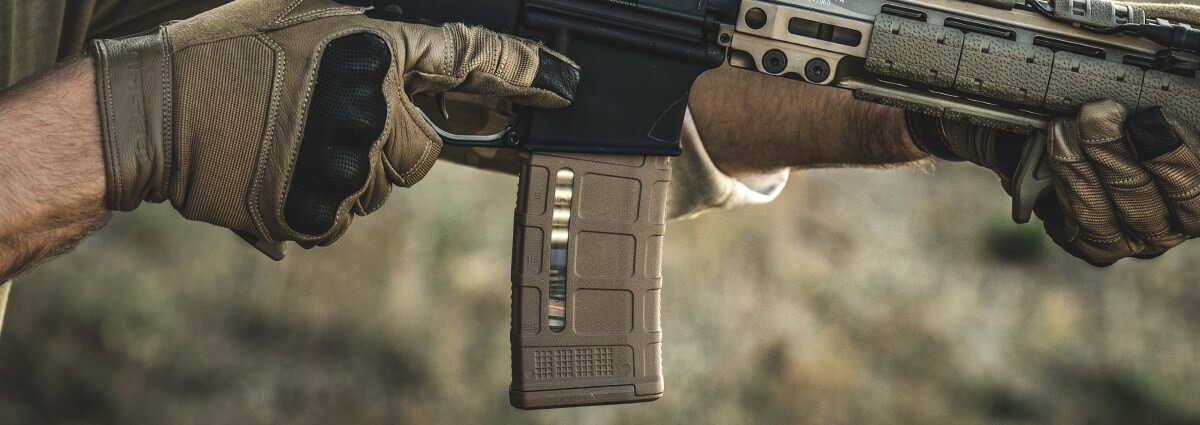
What are Super and Subsonic?
Essentially, any ammo that can travel faster than 1,125fpts, or the approximate speed of sound, is considered supersonic. Subsonic ammunition, then, is anything that travels slower than 1,125fps. If it’s a quiet shot you’re going for, you’ll need subsonic ammunition and a quality silencer, which the .300 is compatible with. Keep in mind, however, that subsonic rounds are not made for hunting as they don’t have the penetration power and velocity needed to take down your target. Coupled with a silencer, the maximum range can be reduced to as low as 50 yards.
Being able to swap between subsonic and supersonic rounds without modification is a great feature for users that use their rifle for more than hunting. Optimal performance comes in with a supersonic 150gr or 125gr .300 BLK round.
Which Round Works Best?
Different rounds work better in different scenarios. You don’t want to head out for a day of hunting or target practice and have no clue which will suit your needs better – the .300 BLK or the 5.56mm.
Based on what’s known about both cartridges, this is a breakdown of common scenarios and which round will take you further in it. Sometimes it is a matter of personal preference, but this is, at least, a launching point.
General Shooting
As much as firing off the powerful .300 BLK may sound like fun, you probably want to think about how much each one costs. Remember that 5.56mm are half the price, so if you’re casually shooting your rifle at a range, it’s best to stick to the cheaper round.
5.56 rounds are also much easier to find than .300 BLK and can be purchased in bulk for a reasonable price.
Hunting
We briefly covered hunting throughout this buyer’s guide, but we’ll reiterate the important stuff here. The best answer depends on what you’re hunting for. Small game and mid-sized deer within a 100 to 150 yard range can be hunted with 5.56mm without hindering your ability to bag your target.
Should your quarry be larger or have a thicker hide, the .300 BLK cartridge is going to be a much better option. The 5.56mm will likely have a more difficult time piercing thick skin and taking down bulkier prey.
Home Defense
Everybody wants to be able to protect their home in the best way possible. Some may turn to security cameras and alarms, but a rifle may be the best deterrent of them all. You may think that just because you picked out the proper gun to defend your castle with means you’re good to go, but the cartridge you use also matters. Between the 5.56mm and the .300 BLK, there are a series of pros and cons that may really come down to personal preference.
Where the .300 BLK shines above the 5.56 is that it can be used with a short barrel and a suppressor. When you’re in tight quarters like a home, you want the shortest barrel possible for ease of mobility. The suppressor is an added bonus to protect your hearing should you have to fire off a warning shot.
Unfortunately, the .300 BLK has one glaring fault that may prevent many users from implementing the cartridge in home defense use – its barrier penetration. Image firing off a warning shot that cuts clean through your walls and winds up implanting itself in a valuable item a room or two away. Or even worse, hits a loved one. You don’t need a round that is designed to pierce thick surfaces when your only goal is hopefully to scare away potential intruders. There’s also the issue where not all states allow for the ownership of suppressors.
You have to weigh whether the risk of barrier penetration is worth having a shorter barrel and the potential for a suppressor. Chances are, it will be.
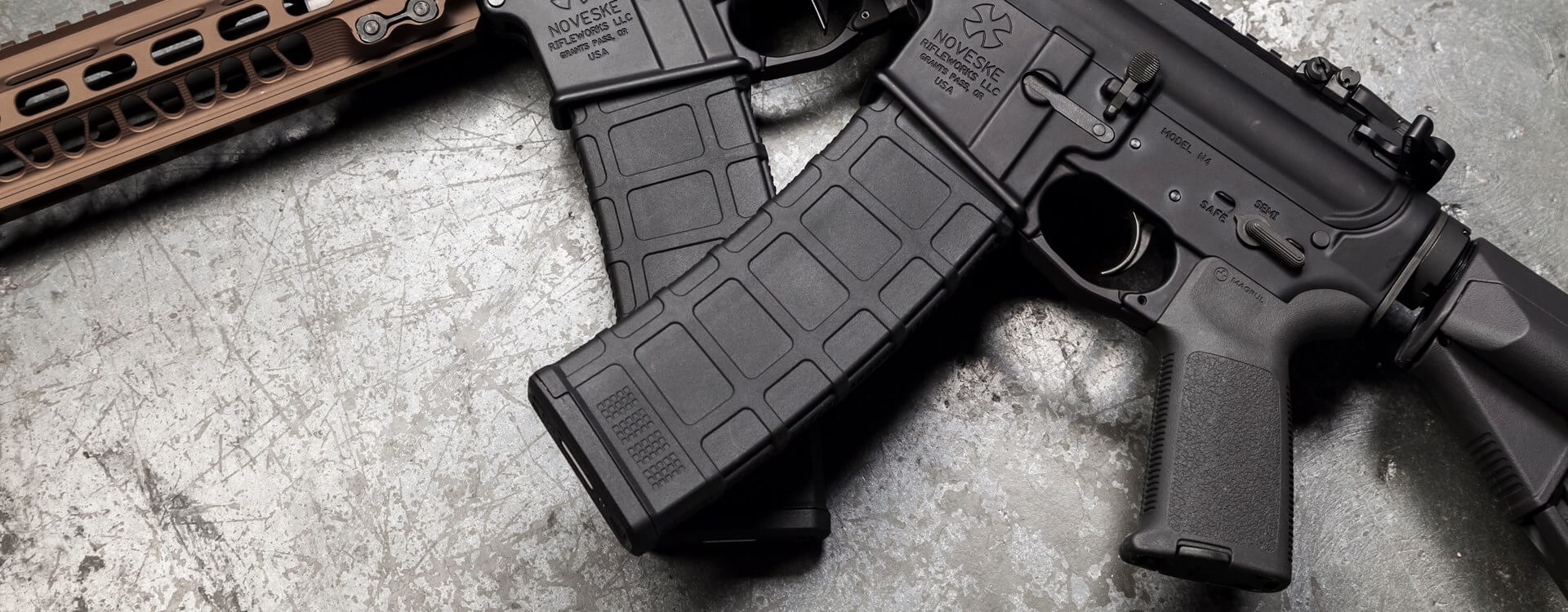
Ready to Buy?
.300 BLK Uppers
Do you feel like you know everything you need to? It’s a lot to take in, but once you’re ready, we threw together a quick guide to point you in the direction of some necessary purchases. First up, before you even consider buying .300 BLK cartridges, you need to outfit your rifle with the best upper.
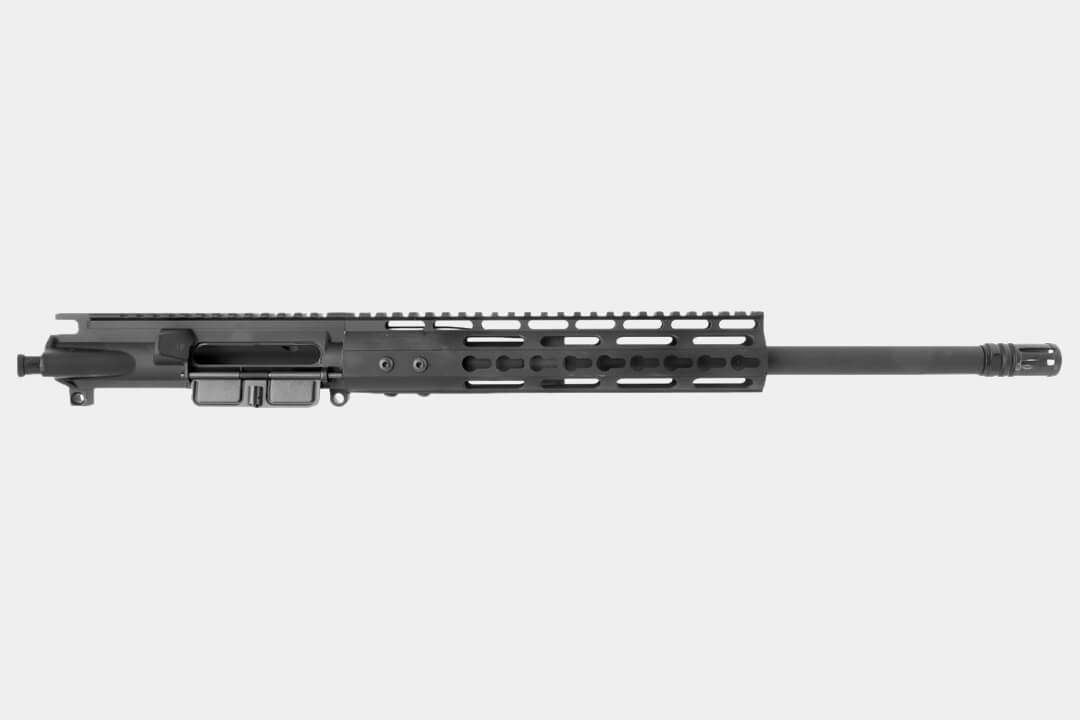 Brownell’s .300BLK AR-15 16”
Brownell’s .300BLK AR-15 16”
The 16” barrel is a little longer than you will need for something like home defense, but it works well with the .300 BLK in other scenarios. Designed with an A3 13-slot aluminum flat top receiver, Brownell’s 16” AR-15 upper is optimized by the KeyMod rail system.
Compatible with most AR-15 lower receivers, this upper is crafted with care and features a low profile gas block, charging handle, forward assist, ejection port cover, bolt carrier group, and phosphate finish.
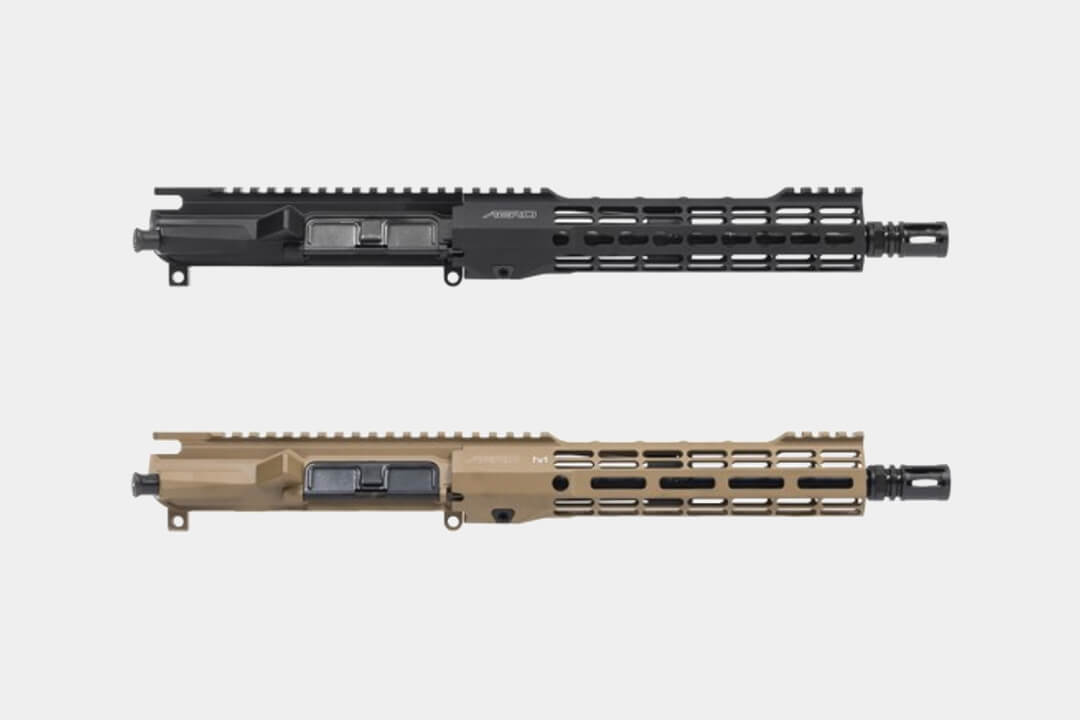 Aero Precision M4E1 Threaded .300 BLK Receiver
Aero Precision M4E1 Threaded .300 BLK Receiver
Featuring a low profile gas block and a pistol length gas tube, the M4E1 Threaded upper is also optimized for a comfortable weight and size. The lightweight build won’t add too much to the total weight of your AR-15 but will still be able to deliver on the power of the .300 BLK.
The threaded upper includes a port door and forward assist along with a “billet look,” enhanced handguards, M4 Feedramps, and laser-engraved T-marks.
 Smith & Wesson M&P AR-15 Whisper
Smith & Wesson M&P AR-15 Whisper
From a name recognized for delivering quality product comes this upper that continues to carry the S&W quality. Capable of functioning with supersonic and subsonic rounds, the Whisper uses a gas system for propulsion.
It will add a little extra weight than many other uppers, but it’s worth knowing you have the Smith & Wesson name attached to your AR-15.
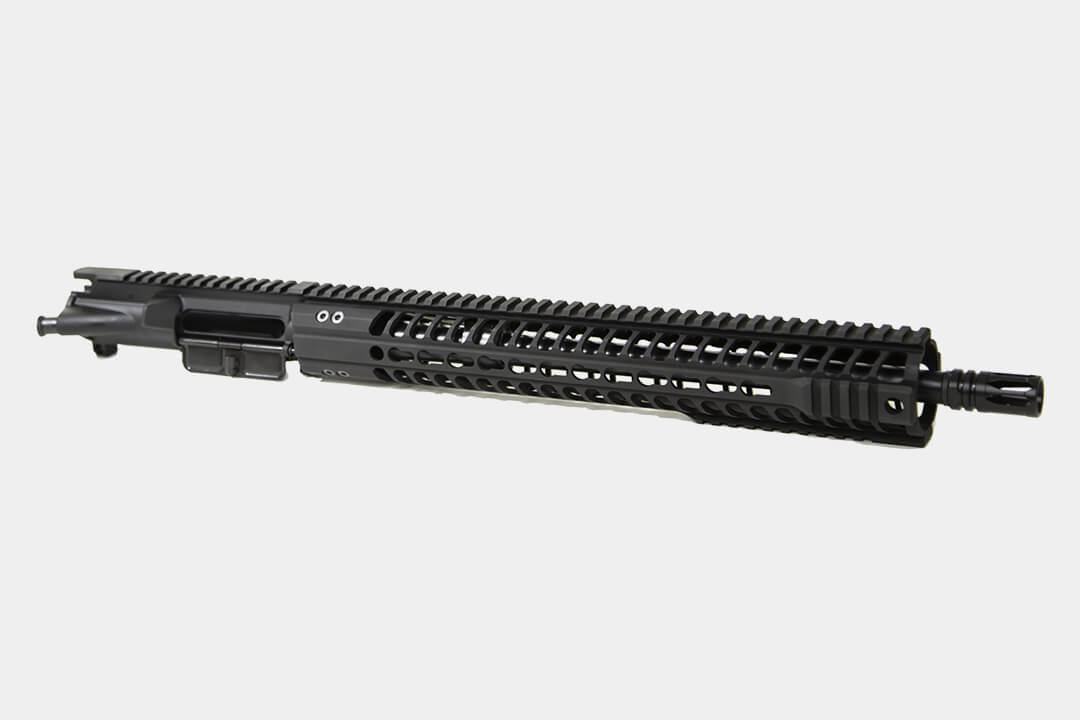 Radical Firearms .300 AAC Blackout Upper
Radical Firearms .300 AAC Blackout Upper
Available in a range of 8.5” to 16” barrel options, Radical’s AR-15 upper is available in a range of configurations. Decide between MLOK, quad rails, or KeyMod for the upper that best suits your comfort. If it’s accessories and attachments you’re looking to add, the MLOK is the best option.
The .300 AAC Blackout Upper is a no-frills model with threaded barrels, forward assists, and designed with a flat top. The shorter option works perfectly with the .300 BLK’s capabilities.
.300 BLK Ammo
.300 BLK cartridges may be in short supply and more difficult to find than 5.56mm NATO rounds, but they are still out there. In fact, these are some of the best options you’ll come across on your hunt for the perfect .300 BLK round.
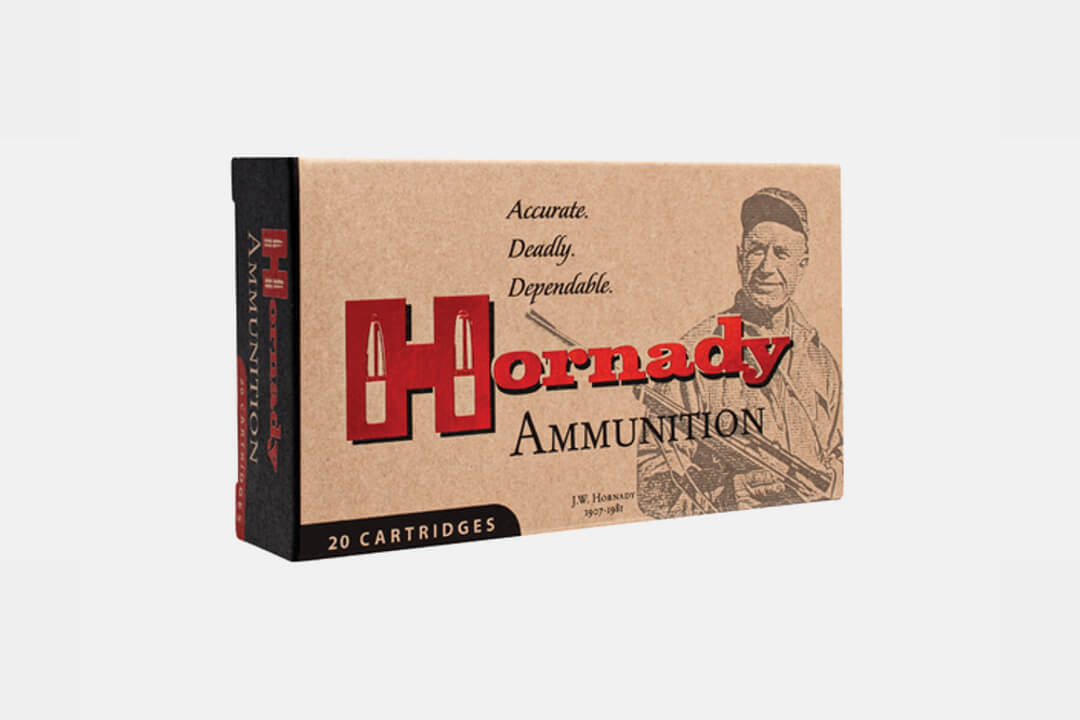 .300 Blackout 135gr FTX
.300 Blackout 135gr FTX
If it’s penetration you need, this .300 BLK 135 gr cartridge will get the job done. Medium to large-sized game do stand a chance against this ammunition. Hand inspected before packaging, you know you’re getting quality from Hornady Custom, and when it comes to your ammunition, it’s quality that you want to strive for.
This FTX .300 BLK is made from a blend of ballistic efficiency and bearing surface for less drag and flatter shooting with every pull of the trigger.
 Fiocchi .300 AAC Blackout 150gr
Fiocchi .300 AAC Blackout 150gr
With a maximum velocity of 1,925fps, this 150gr round is made from a full metal jacket bullet and pristine brass-case. The muzzle energy is approximately 1,200 ft lbs for maximum efficiency. Ideal for shooting ranges, it’s made for maximum accuracy and precision. At approximately $.64 per round, Fiocchi’s .300 AAC Blackout is on the lower end of the price spectrum for this type of ammunition.
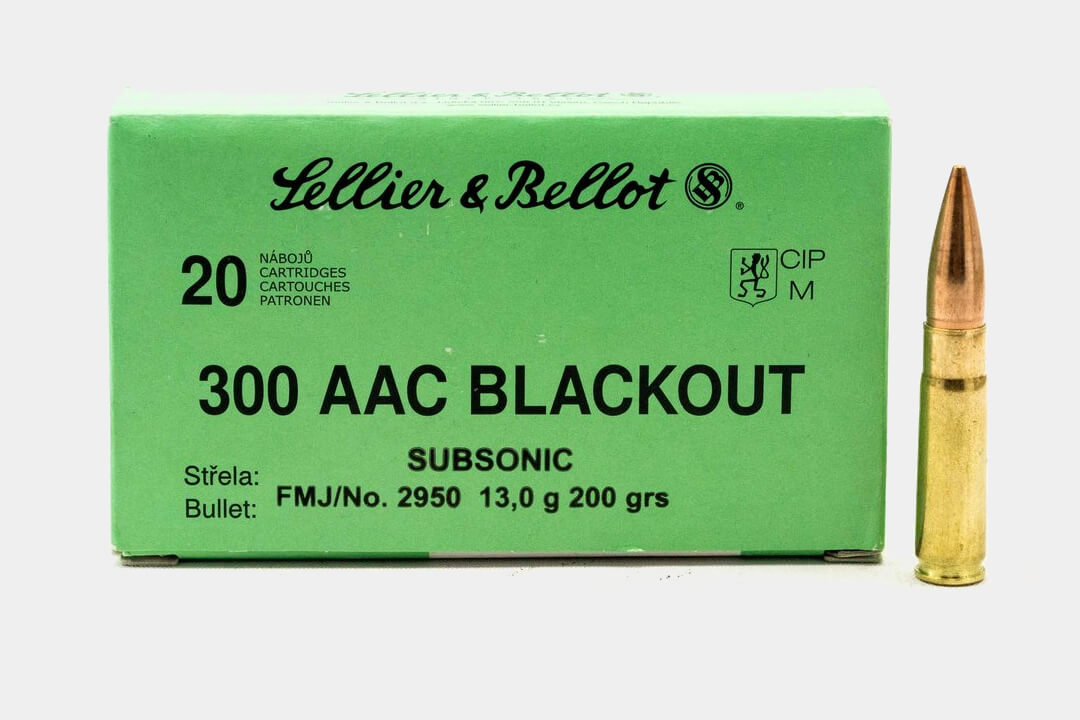 Lellier & Bellot.300 AAC Blackout Subsonic 200gr
Lellier & Bellot.300 AAC Blackout Subsonic 200gr
A subsonic round made to be used with shorter barrels and a suppressor, you’ll get a maximum velocity of around 1,060 and a muzzle energy of nearly half that in foot pounds. Designed with a 200gr weight, each round is also made with clean-burning powder for an ideal shot every time.
The bullet is a full metal jacket and brass casing and each one costs around $.69 per round, ensuring your buck will go far with each box of ammo.
Wrapping Up – Drawing Your Conclusion
By now, we’ve touched on many aspects of the .300 BLK round type. Based on what you now know, it’s easy to see that deciding which ammunition type – 5.56mm NATO and .300 BLK – is best isn’t as clean cut as one would hope.
To know precisely which round of ammo is ideal for your needs, the best option is to try them out at a range. Don’t waste too many .300 BLK rounds on a paper target, however. Especially if you’re firing off a cartridge that’s on the higher end of the $3.00.
